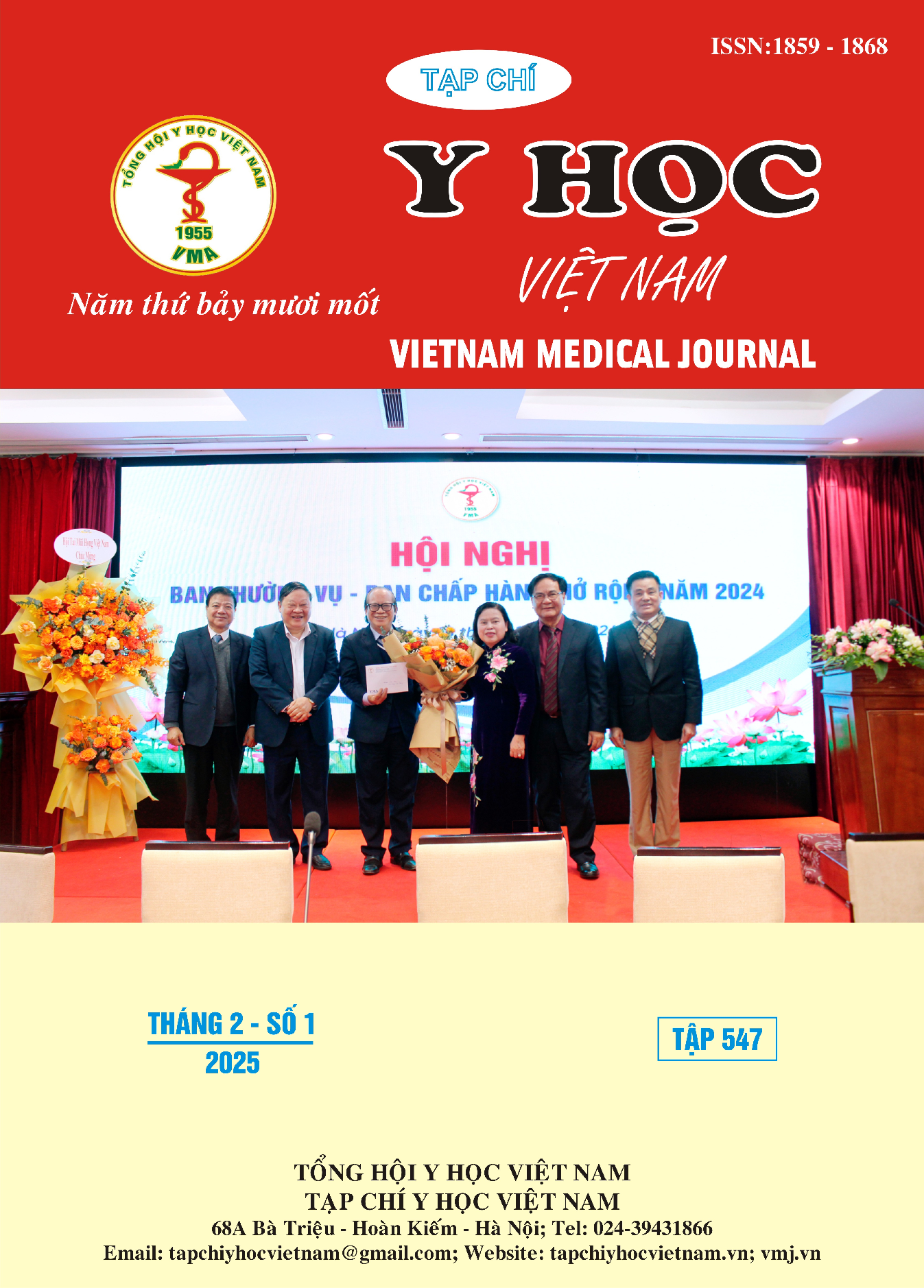HIV INFECTION AND RELATED FACTORS IN PATIENTS WITH GENITAL ULCERS IN HO CHI MINH CITY DERMATOLOGY-VENEREOLOGY HOSPITAL
Main Article Content
Abstract
Introduction: Genital ulcers increase risk of HIV infection, while HIV infection prolongs the healing time of genital ulcers. The objective of this study was to determine the prevalence of HIV infection and its associated factors in patients with genital ulcer disease (GUD) in Ho Chi Minh city Dermatology-Venereology Hospital. Methods: A descriptive study was conducted on series of patients (from 18 y.o) with genital ulcers in Ho Chi Minh City Dermatology-Venereology Hospital from January 2022 to October 2023. The etiology of genital ulcers were determined by combination of clinical features and laboratory examinations including PCR for HSV-1 and HSV-2; RPR and TPHA serum tests for syphilis and gram staining for H.ducreyi. Patients were considered as HIV infection when they had 3 positive blood tests for HIV, including 1 quick test and 2 different confirm tests. Results: There were 179 patients with GUD, including 119 male patients (66.5%) and 60 female patients (33.5%). Rate of patients under 37 y.o was 67%. Rate of HSV-1, HSV-2 and syphilis I were 16.2%, 31.3% and 24.6%, respectively. The rate of unknown causes-GUD was 28.5%. There were 12 patients had positive with HIV test (6.7%). Rate of HIV infection of patients with syphilis I had significantly higher that of patients with other GUD. Conclusion: The rate of HIV positivity in the patient with GUD was 6.7%. Rate of HIV infection in patients with syphilis I GUD had significantly higher rate of that in patients with other GUD. There is the need of counseling HIV test for patients with GUD, particularly GUD caused by syphilis.
Article Details
References
2. Behets FM, Liomba G, Lule G, et al. Sexually transmitted diseases (STDs) and human immunodeficiency virus control in Malawi: afield study of genital ulcer disease. J Infect Dia 1995; 171:451–455.
3. Gomes Naveca F, Sabidó M., et al. Etiology of genital ulcer disease in a sexually transmitted infection reference center in Manaus, Brazilian Amazon. PLoS One. 2013 May 21;8(5):e63953.
4. Makasa, M., Fylkesnes, K. & Sandøy, I.F. Risk factors, healthcare- seeking and sexual behaviour among patients with genital ulcers in Zambia. BMC Public Health 12, 407 (2012).
5. Mungati M, Machiha A, Mugurungi O, et al. The Etiology of Genital Ulcer Disease and Coinfections With Chlamydia trachomatis and Neisseria gonorrhoeae in Zimbabwe: Results From the Zimbabwe STI Etiology Study. Sex Transm Dis. 2018;45(1):61-68.
6. Noda AA, et al. Etiology of Genital Ulcer Disease in Male Patients Attending a Sexually Transmitted Diseases Clinic: First Assessment in Cuba. Sex Transm Dis. 2016 Aug;43(8):494-7.
7. Prabhakar P, Narayanan P, Deshpande GR, et al. Genital ulcer disease in India: etiologies and performance of current syndrome guidelines. Sex Transm Dis. 2012 Nov;39(11):906-10.
8. Rompalo AM. Modification of syphilitic genital ulcer manifestations by coexistent HIV infection. Sex Transm Dis. 2001;28(8). 448-54


